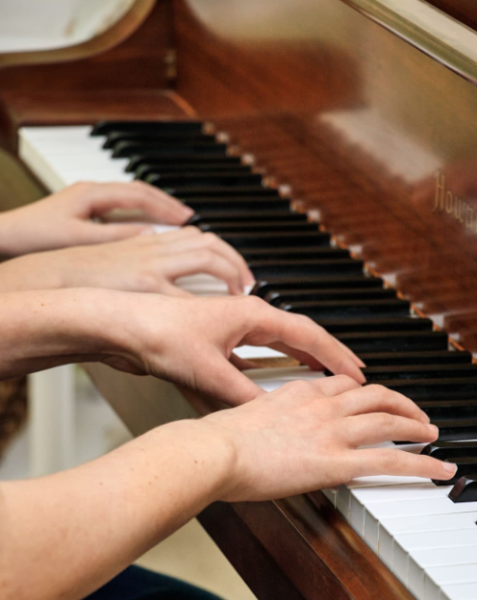The virtual aspects of last school year should not be abandoned
Courtesy of JHU School of Education
Virtual aspects of online learning can be utilized this school year.
Last school year was unique, to say the least. Computer screens replaced teachers, icons replaced students, and bedrooms replaced classrooms. Due to the drastic reliance on technology during the 2020-2021 school year, this September poses a new set of challenges as East students return to the halls. Many share concerns about how students will adjust to in-person instruction, given that online learning has remained dominant for nearly two school years. Despite the relief most staff and students feel in regards to returning to some sense of normalcy, it is crucial not to abandon the virtual aspects of last school year.
In this year of transition, it is necessary to adjust smoothly back to the way school used to function. Last year, the online school day lasted roughly six hours. Most days there was not even a designated lunch break– only a six-minute passing time in between Google Meets. While this schedule was uncomfortable for many, it slowly became normal as time went on; students adapted surprisingly well. New clubs, such as East Musicians on Call and Women in Sports, were created and organized while online school was in effect. With teenagers being the most technologically savvy age demographic, it is no wonder students have gotten used to this schedule.
Teachers, too, have developed newfound skills while teaching online. Although the transition was difficult for some, it became necessary for staff to utilize modern applications in order to conduct class effectively. Tools such as CK-12 and Nearpod were used to convey lesson materials, while Edpuzzle and Newsela reinforced important concepts. Applications like Flipgrid also allowed teachers to record their screens when covering information, which was especially useful within the math department.
These factors ought to be kept in mind as the upcoming school year approaches. Instead of reverting to the manner homework and lesson plans were handled before quarantine, teachers should incorporate some of the techniques they used while online school was in effect. This way, the transition from Google Meet to real-life classroom is easier, not only for staff, but especially for students.
For example, the emphasis on utilizing Google Classroom as a necessary outlet to convey information should remain consistent. Additionally, the countless screen-recorded videos of instruction should not go to waste. Teachers who recorded themselves explaining specific learning goals should continue to use those resources for upcoming classes, and have them uploaded to their new Google Classrooms. Any other lesson plans that were converted to online material should be posted as a reference for all future students. Finally, the use of applications such as Nearpod, Edpuzzle, CK-12, and similar websites should be integrated within in-person instruction.
Some may argue that students need a break from screen-time, due to a full school year’s worth of online learning However, given that East is returning to complete in-person operation come this fall, there is an opportunity for a fair balance. Instead of a six-hour day glued to the computer, teachers and students can find the perfect mix to optimize learning.
After all, research has shown that students respond well to technological resources being utilized in the classroom. According to one academic paper from the Abdul Latif Jameel Poverty Action Lab, consisting of research from 126 randomized evaluations, the use of educational software improved learning for students. Out of 30 studies concerning computer-assisted learning, 20 showed a statistically significant increase in test scores.
Given these unprecedented times, the return to normalcy must be treated with care. With teachers more technologically informed than ever before, and students who benefit from these modern resources, it is clear that an evolving school environment is necessary. With this new perspective and increased emphasis on incorporating technology into the classroom, learning can be improved for years of students to come.

Emily Boyle is a senior and third-year member of the Eastside Editorial Board. This year she is a Features Editor, and Head of Design for the Demogorgon...









